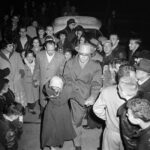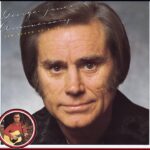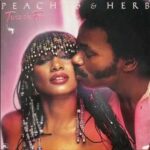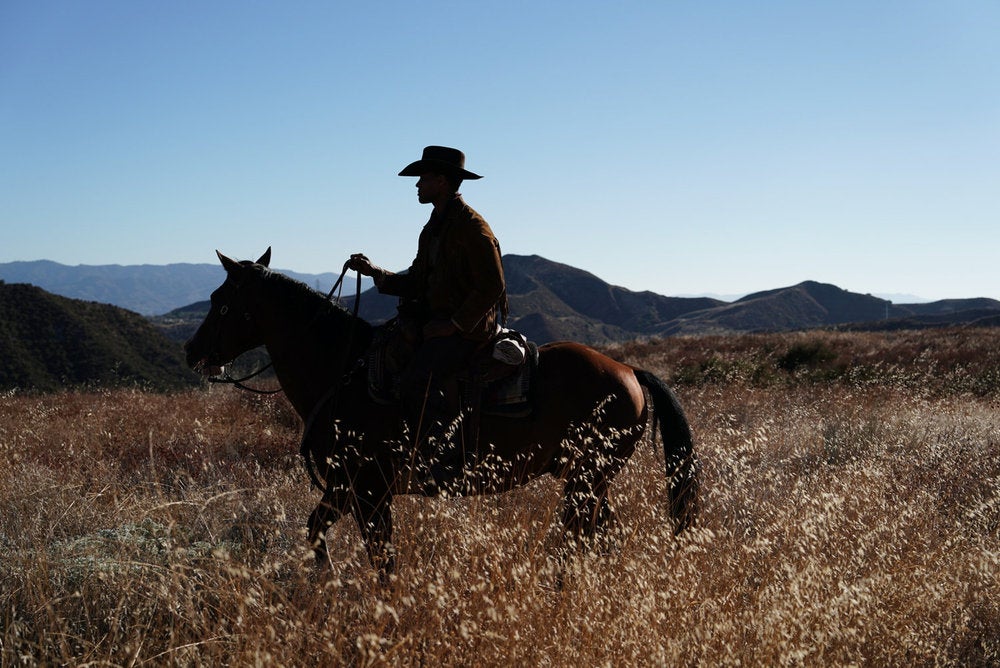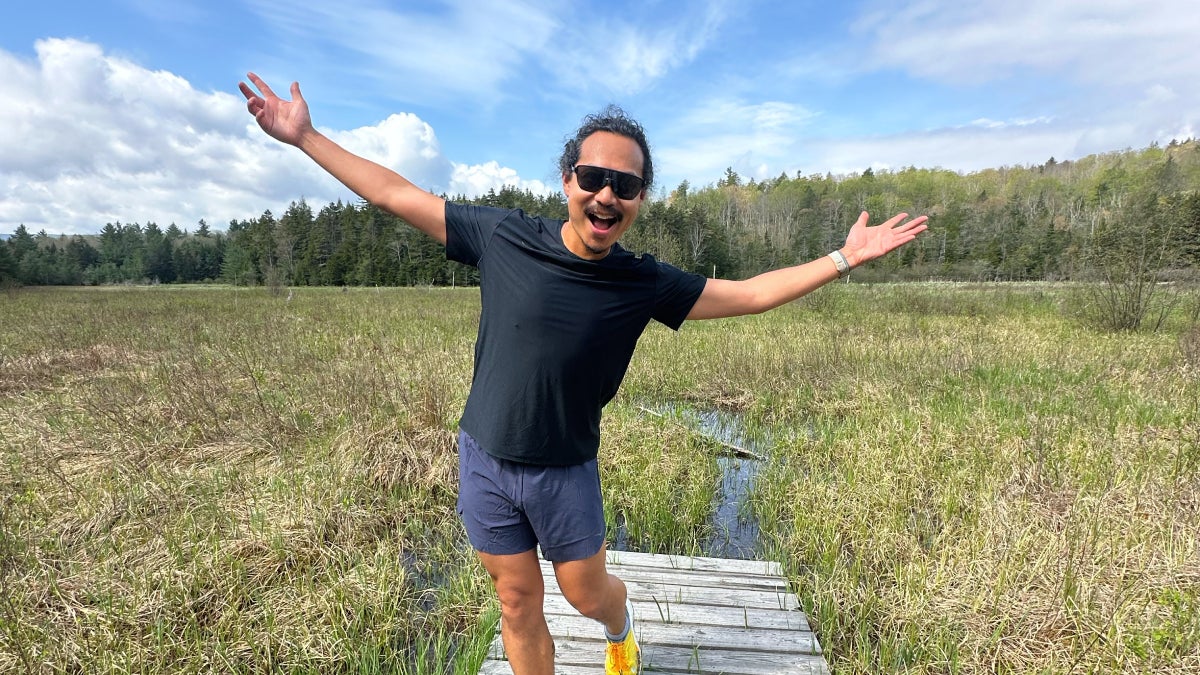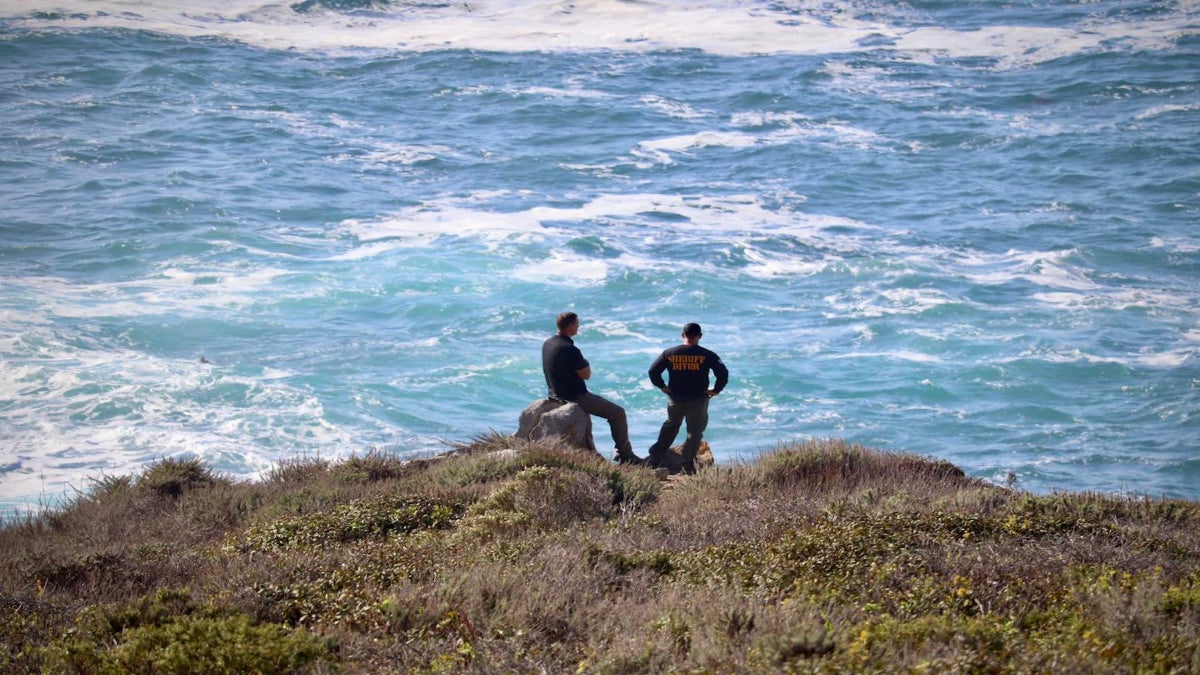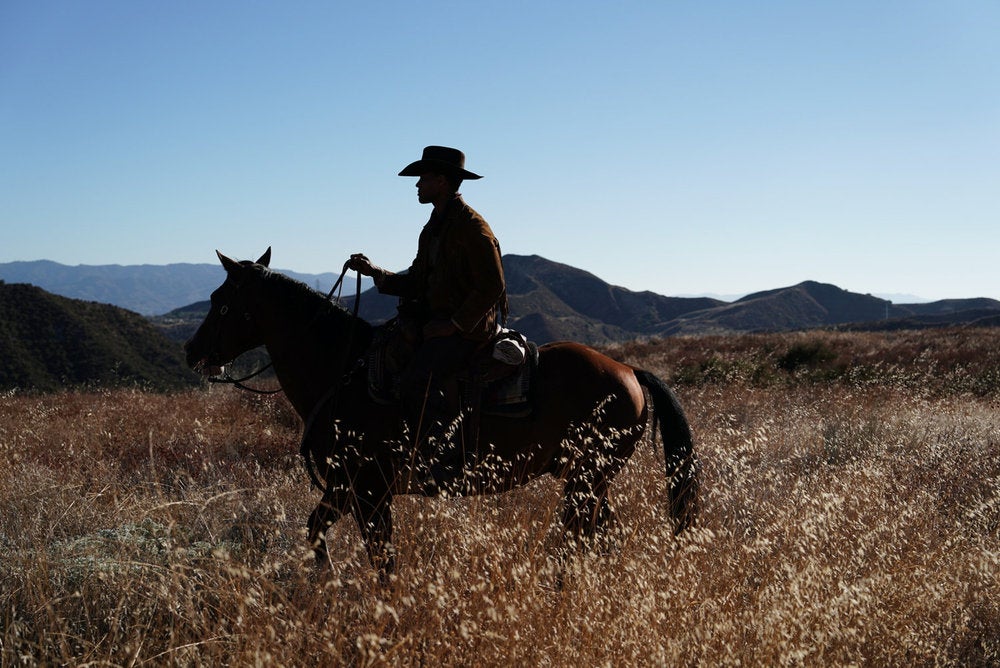
The image of the American cowboy is a reflection of our nation’s soul. A symbol of rugged individualism and self-determination, the ethos of American idealism is conjured in our minds as a human form clad in leather, mounted upon a horse galloping across the western frontier. He is the personification of manifest destiny. In the documentary film series High Horse from Oscar-winning director Jordan Peele and Monkey Paw Productions, the story of this iconic figure is portrayed with unapologetic accuracy and authenticity to reveal an unassailable truth. The American cowboy is Black.
Delivered in three episodes, this sweeping narrative details the origins of our long-enduring national obsession with the job of managing land and wrangling cattle on horseback. But history is never so simple. The series’ primary focus on the experience of Black Americans also demonstrates a misguided false belief. Historically, the exclusive depictions of white men as cowboys in legend, literature, paintings, photographs, and films belie the contributions made by people of African descent to the defining elements of our American cultural identity. From horse racing to rodeo, through the cultivation of farm fields and homesteads, to the creation of country music and the rhythmic steps of line dancing, the unmistakable verve and style of these endemic expressions can be traced directly to the innovations of Black folks.
“The Black cowboy is not only embedded deep into the fabric of America. They are the thread that binds it together,” the docu-series director Jason Perez tells Outside. “Once you know where you come from, you embrace it, and it’s empowering.”
Streaming on Peacock, High Horse: The Black Cowboy explores the continuing history of the Black cowhands whose tireless labor set the standard for the hard work that fueled the agrarian economic might of America. The formerly enslaved took the promise of emancipation to create an admirable lifestyle of excellence through the rearing of horses. The first champion jockeys of the famed Kentucky Derby were Black men. Their skill and daring as accomplished athletes inspired the ongoing legacy of Black-owned racing stables whose horses show, place and win to this day. Black heroes on horseback included both men and women, like the gun-toting stagecoach driver Mary Fields and legendary steer wrestler Bill Picket. And U.S. Marshall Bass Reeves, a Black man who was responsible for the dispensation of justice in the American West was the model for the fictional character the Lone Ranger.
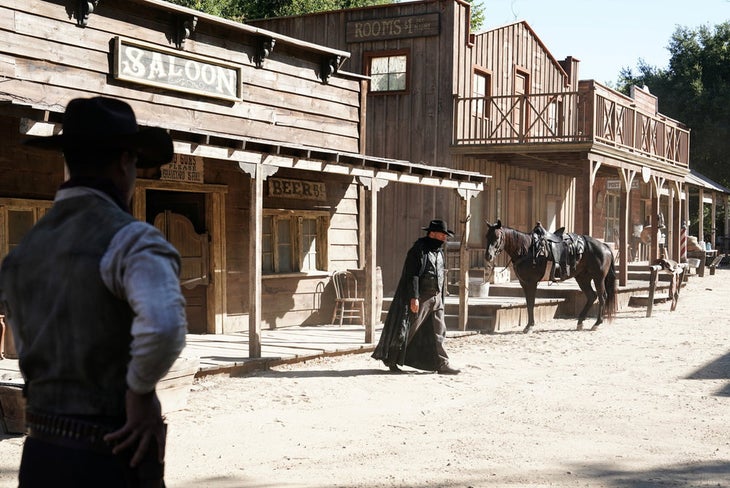
Executive producer Jordan Peele was struck by the pervasive lack of Black characters in American western films. Peele became the first Black screenwriter to win the Academy Award for Best Original Screenplay in 2018 for his film Get Out. Although Black people have long been underrepresented in the film industry, ironically the first motion picture ever recorded was a Black man riding a horse. Created in 1878 by Eadweard Muybridge, this two-second clip called A Horse in Motion featured a jockey whose name is unknown. That flickering image inspired Peele’s 2022 blockbuster neo-Western sci-fi thriller Nope, which delves into the idea of manipulating human perception for the benefit of spectacle and exploitation.
“I was really fascinated with this question,” Peele says in High Horse. “What happened to the Black cowboy?”
In Nope, a brother and sister in a Black family of movie horse trainers try to capture a video of a mysterious flying object after the death of their father. As the fictional great, great, great grand-children of the Muybridge jockey, they struggle with the lack of presentation of Black riders in cinema. Despite the historical record of profound contributions to the myths of American culture, people of color are strangely absent. “I was really fascinated with this question,” Peele says in High Horse. “What happened to the Black cowboy?”
This glaring omission is resolved through an accounting of the racist tropes that aimed to diminish and erase the value of the Black cowboy to our national heritage. The series outlines the ways in which musical traditions are scrubbed of their notes drawn from the gospel of the Black church and the relevance of African derived African-derived instruments like the banjo. Today, Black artists, including superstars like Beyoncé, still struggle to find their place on the country and western music charts.
Not only were Black cowboys removed from our songs and stories, but they have also been systematically displaced from the land itself. Through confiscation by eminent domain, when the government takes away someone’s private property for public use, lack of equitable financial investment, and direct threats of physical violence, too often Black Americans have been driven to despair and denied the right to exist as stewards of their own property.
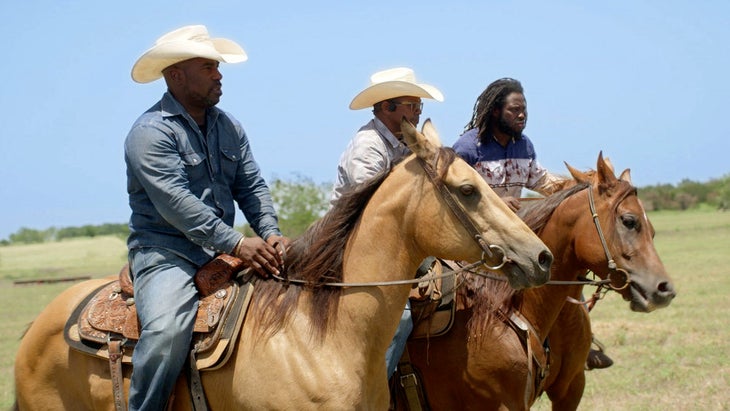
“Anything that can be grasped, once it can be shown to be successful or something to be wanted or desired, Black people’s possession of it only becomes an invitation for it to be grabbed,” says author and historian Zaron Burnett in the docu-series.
But High Horse is a celebration of the strength and resilience of Black cowboy culture that persists in spite of all attempts to erase it. With the swagger and confidence of peaceful warriors, each character in the film conveys a self-awareness of their inherent value as productive and fully engaged members of society. In the series, journalist Van McClellan defines a Black man on a horse as an act of defiance, power and control.
“I think when white America sees a Black man or black person in general in a position of power, specifically the elevated position on a horse, it’s like literally looking down on whoever they are talking to,” author and activist Brea Baker says in the series. “It symbolizes a reversal of hierarchy.”
From their elevated seat in the saddle, Black cowboys are reasserting their personal sovereignty and taking their rightful place on the landscape. The film shares the stories of a new generation that is reclaiming the cultural heritage of farming and raising cattle in the 21st century, from which their ancestors emerged following the Civil War and the Reconstruction Era.
“Afro-Pastoralism is about honoring the fact that our history does not begin and end with slavery,” says Baker. “Before we were forced laborers on the American continent, we were chosen stewards on the African continent. We loved land. We grew things because they fed us, it healed us and it was something that we did since the beginning of time.”

Director Jason Perez wants viewers of this docu-series to know that the Black cowboy has always been an active and vital part of American culture. Among many working-class citizens, they do the important tasks of raising our food and tending herds of cattle while providing inspiring expressions of music and athletic performance. In High Horse, the Black cowboy is a longstanding vision of professional excellence that is the realization of a work ethic that is at the heart of the American dream.
“This is what they do every day. They get up, they work, they train for rodeo, they farm, they create music. They don’t feel like they have been erased,” says Perez. “So, it needs to be known and made very clear that the attempted erasure is a failure. Now more than ever. The black cowboy exists and is strong and is thriving and will be here forever.”
The post Jordan Peele’s ‘High Horse’ Doc Revives the Real History of America’s Black Cowboys appeared first on Outside Online.

